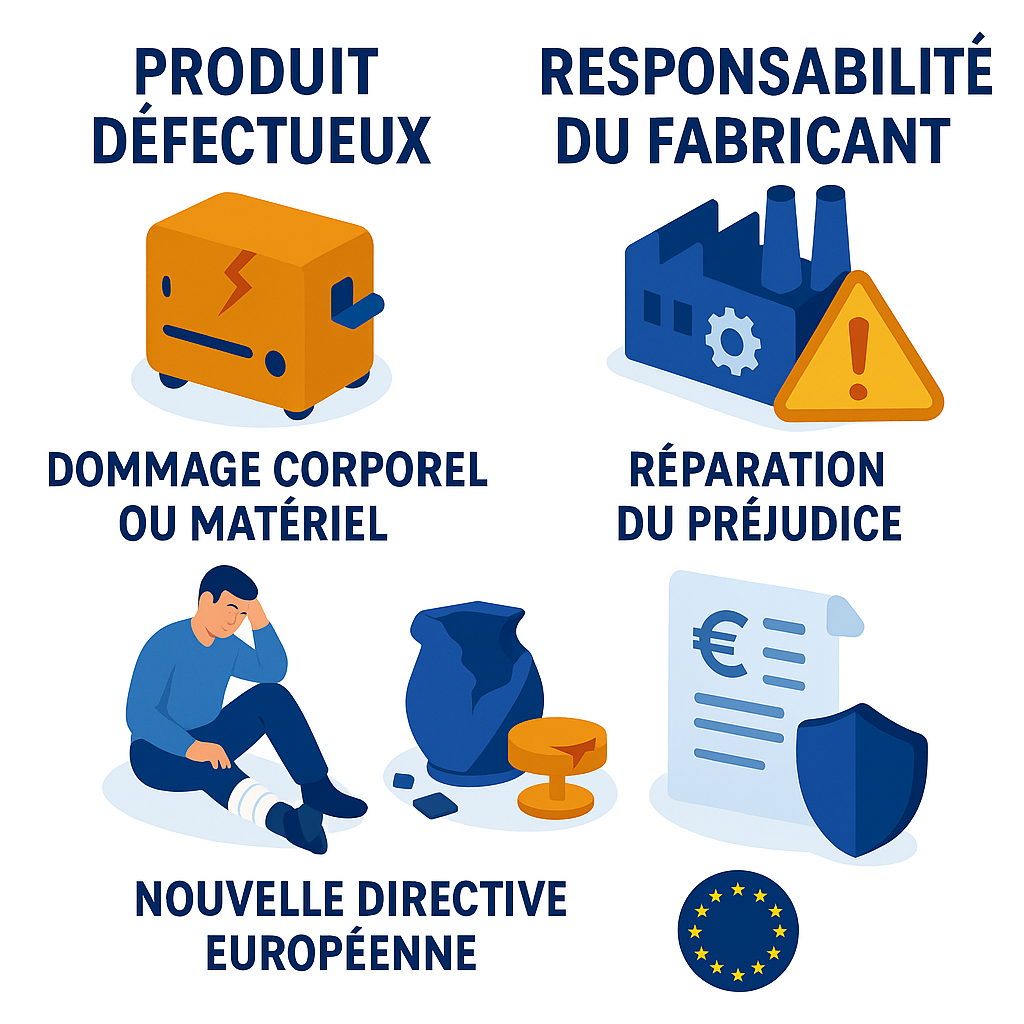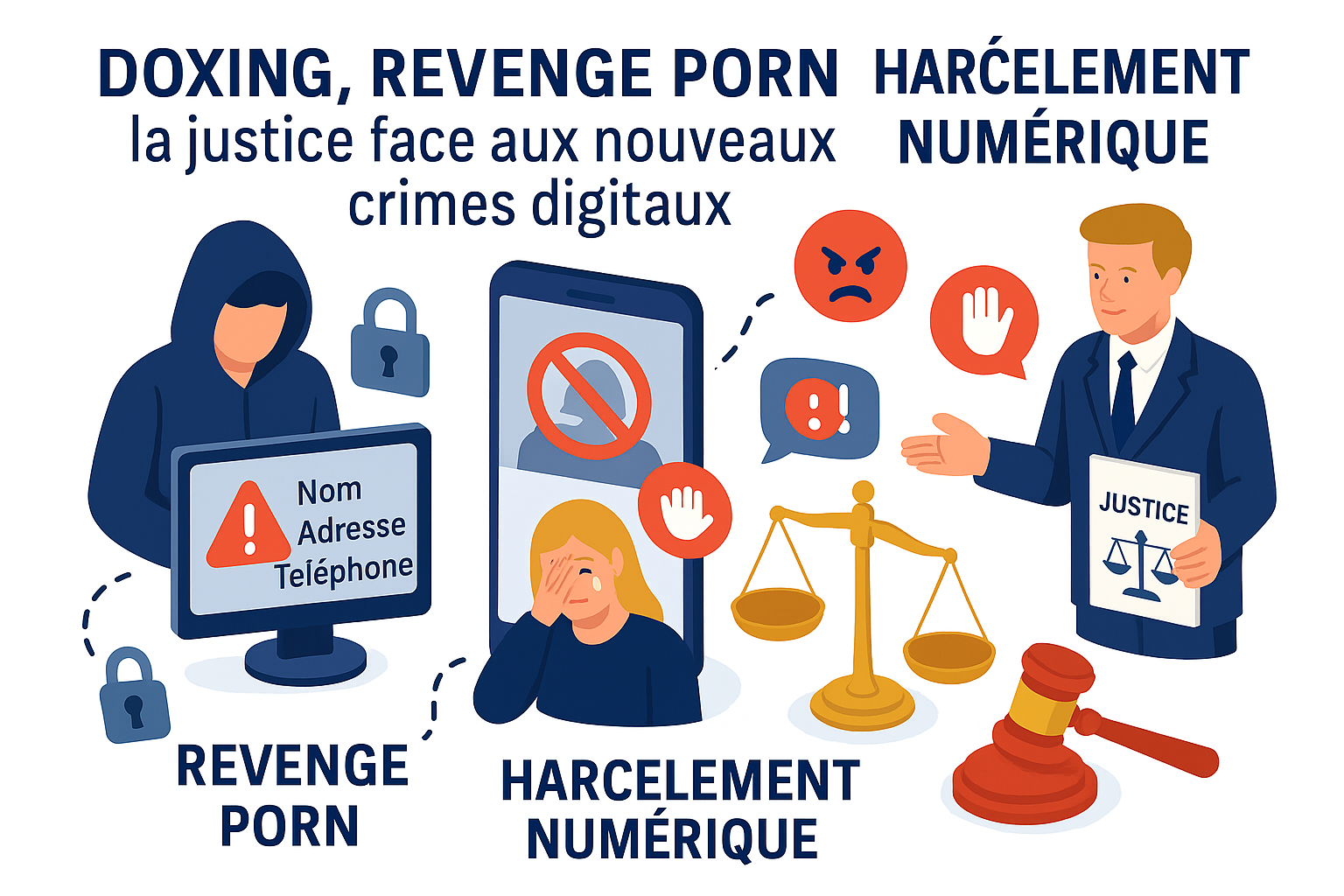In a world wheretechnological innovation and digitalization are profoundly changing our daily lives, the need to adapt the rules governing liability for defective products is becoming ever more pressing. On October 23, 2024, theEuropean Union therefore adopted Directive 2024/2853, overhauling the principles established by Directive 85/374/EEC, which had been in force for almost forty years.
This reform, which will come into force on December 9, 2026, aims to strengthen consumer protection and provide greater legal certainty for manufacturers and distributors in the face of a rapidly changing economy, characterized by the rise ofartificial intelligence and connected objects.
So what are the concrete impacts of this reform on the liability of market players? What new challenges and risks will they have to face? This question launches a debate on the challenges of liability in the context of technological change, and on the different ways in which victims can be compensated.
If you need a consumer law attorney, contact me!
Why was a revision of the liability regime necessary?
In the current context of digital transformation, changes to the legal framework governing product liability are now essential. The European directive adopted on October 23, 2024 introduces real advances designed to meet the challenges posed by the rise of technological innovation and connected objects. In a society where consumers increasingly interact with intelligent technologies, it was crucial to re-examine the notion of "defective product" and broaden its scope.
One of the main changes is the explicit inclusion of new elements, such aselectricity and software, within the definition of a product. This reflects the European Union's desire to modernize and adapt the legal framework to contemporary realities. However, to support innovation, it should be noted that the text excludes non-commercial free and open source software from this liability regime.
Another important point is the inclusion of intangible components, such as digital manufacturing files and integrated services. This reflects an understanding of the risks associated with an increasingly dematerialized environment, where elements such as artificial intelligence systems must be factored into manufacturers' liability.
At the same time, the directive continues to adopt the classic approach to product defect, whether intrinsic or extrinsic. However, it broadens this notion to take account of recent technological developments. For example, a product can now be deemed defective even on the basis of its ability to learn or evolve after it has been placed on the market, which is fundamental for products incorporating artificial intelligence. The impact of this reform is twofold: it provides better protection for consumers, while imposing greater obligations on market players.
To ensure optimum protection, it is also crucial to assess product safety beyond their physical design; this now includes requirements relating to cybersecurity, a major issue in an interconnected world. The reform thus paves the way for a broadened and modernized responsibility, adapted to today's technological challenges.
This transformation of the law is also a response to the desire to balance the impact of modern challenges on the liability of manufacturers and distributors. It is essential to examine these developments to understand how they will influence future interactions between consumers and companies.
What are the new terms of manufacturer and distributor liability?
The recent directive 2024/2853 has made significant changes to the liability of manufacturers and distributors. One significant advance is the clear distinction between the different types of market players, namely manufacturers, suppliers and distributors. Each is now assigned specific responsibilities according to their role in the distribution chain.
In particular, the directive emphasizes the importance of product transparency and traceability. This implies compliance obligations for manufacturers, who must not only guarantee that their products comply with safety standards, but also provide detailed information on product design and manufacture. For example, failure to comply with instructions for use, often issued by the manufacturer, may now constitute grounds for increased liability, particularly if a user suffers damage.
- Enhanced liability: Manufacturers must prove that they have taken all necessary measures to prevent their product from being defective.
- Obligations to inform: An obligation to inform consumers of the potential risks associated with the use of a product.
- Regulations concerning connected objects: Specific criteria have been established for the security of products integrated into the Internet of Things.
Another central aspect of this reform is the emphasis on the principle of product safety. This translates into a heightened requirement for assessment of potential risks, particularly with regard to emerging technologies such asartificial intelligence. Manufacturers will therefore have to justify that their products present no danger to users, even in unpredictable contexts of use.
As far as distributors are concerned, the directive introduces greater responsibility for the products they place on the market. They must ensure that products comply with current safety standards. As a result, the supply chain will have to be rigorously monitored to avoid any defective products being placed on the market.
The implementation of these new liability arrangements therefore raises questions about the acceptable risks for manufacturers and distributors. This reflection is essential, as it must ensure a balance between protecting consumers and encouraginginnovation in a rapidly evolving legal framework.
The next focus will be on the implications of these changes forvictim compensation, where the new elements of liability will have a direct impact on consumers' rights in the event of accidents involving defective products.
How does the reform affect compensation for victims?
Directive 2024/2853 represents a significant turning point in the field ofcompensation for victims of defective products. The reform introduces new procedures designed to strengthen consumer protection, while ensuring that the specific nature of the damage caused is better taken into account. This section looks at the main changes and their impact on victims' rights.
Firstly, the reform broadens the scope of compensable losses, enabling victims to claim compensation for damages that were previously excluded. Thus, in addition to bodily injury and property damage, victims will now be able to obtain compensation for :
- Psychological damage: medically-recognized psychological disorders will be taken into account, marking a major step forward in the consideration of non-physical damage.
- Destruction of personal data: Loss or corruption of data, when not used for business purposes, is now compensable, illustrating the adaptation of the legal framework to digital issues.
This development takes place in a context whereartificial intelligence and connected objects are playing an increasingly important role. Damage caused by these technologies, whether physical or intangible, will henceforth be taken into account when assessing damages. This guarantees greater protection for users against the impact of these new technologies on their daily lives.
The reform also makes it easier for victims to prove a defect. The new provisions make it possible to establish presumptions of defect and causality, particularly in complex technical contexts. This represents a genuine rebalancing in favor of victims, who often face difficulties in proving their injury in cases involving advanced technological products.
Finally, the directive insists on transparency in the administration of evidence. Member States will be required to ensure that victims can obtain a court order for disclosure of evidence held by defendants. This measure is of the utmost importance, especially in the context of disputes involving artificial intelligence systems, where the asymmetry of information between producers and victims is particularly marked.
These measures aim to promote greater legal certainty for consumers, enabling them to obtain adequate compensation in the event of damage caused by defective products. Directive 2024/2853, by addressing the modern challenges of victim compensation, assumes a key role in the evolution of product liability practices.




